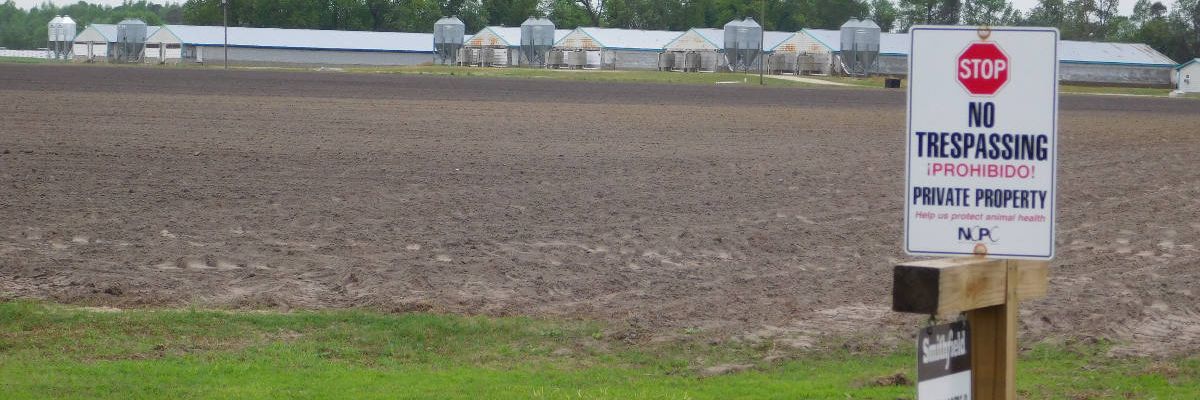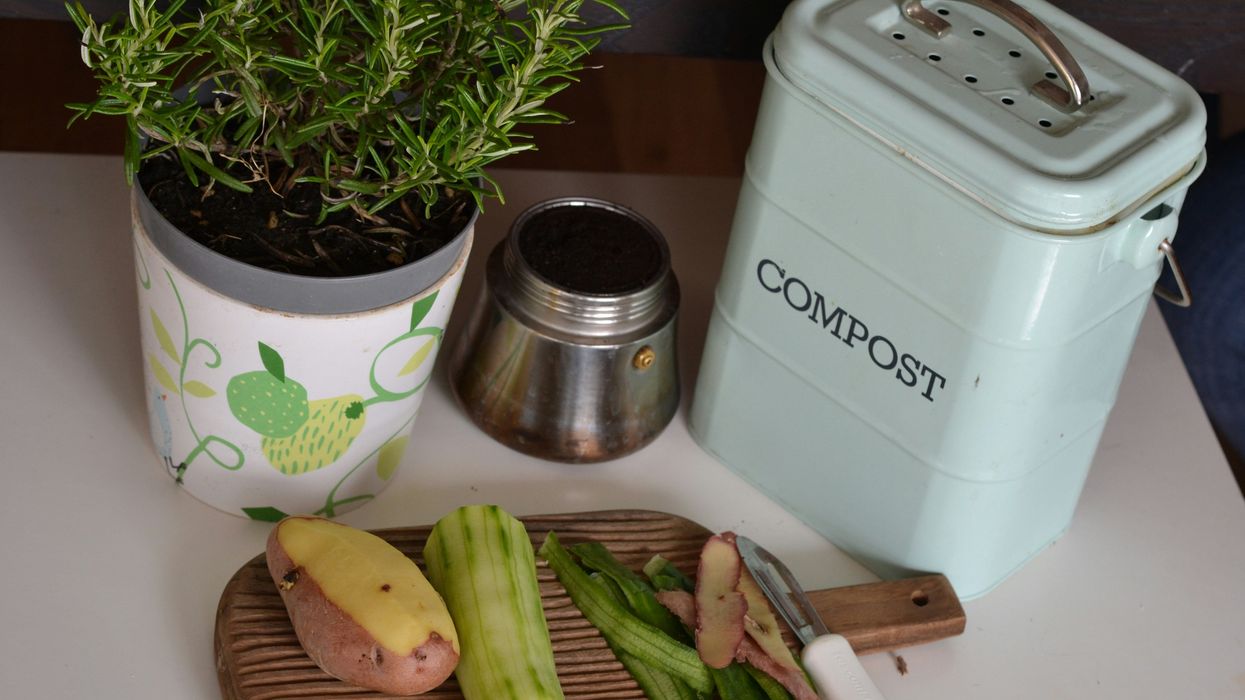As doctors in the Netherlands prepared a young girl for open heart surgery in the summer of 2004, they made a discovery that confused her medical team.
The girl harbored a strain of infection-causing bacteria on her body called methicillin-resistant Staphylococcus aureus (MRSA). MRSA is tough to kill, because it resists treatment with most common antibiotics. If it gets into the bloodstream, it can be deadly.
MRSA infections were extremely rare in the Netherlands at the time. Most people in the Netherlands with MRSA had spent time in foreign hospitals where the infection was more common, but not this girl.
When the doctors tested the girl's family, they found her parents too had MRSA on their bodies. The family lived on a farm and raised pigs. The doctors would later trace the infection back to one of the family's pigs, which harbored this particular strain of MRSA.
It was the first time doctors anywhere had traced a human staph infection to farm animals–but it wasn't the last. The Dutch team found that swine workers were 760 times more likely to carry MRSA than other patients admitted to Dutch hospitals.
Since then, researchers have uncovered evidence of livestock-associated antibiotic resistant bacteria strains on farmworkers all over the world.
In the latest example this April, researchers reported that kids whose parents worked at industrial hog farms in North Carolina were more likely to harbor antibiotic-resistant bacteria in their mucus than kids in other communities. The new report is the first U.S. study to outline the risk of these livestock-associated superbugs to other members of the household.
Antibiotic resistance is a big problem. Across the globe, infections that were once easy to treat with antibiotics have become deadly again. Disease-causing bacteria are becoming resistant to antibiotics faster than we're discovering new ones. Each year in the United States alone, more than 2 million people are infected with bacteria that can't be killed by the drugs designed to stop them. More than 23,000 of those people die as a result of their infections.
Pig farmers—and their families—are on the front lines. A growing body of studies has shown that livestock and their human handlers can swap these potentially harmful bacterial strains.
Scientists now are scrambling to track where and how this transmission occurs in an effort to quell the human health threat.
Overuse leads to antibiotic resistance

Credit: Brian Bienkowski/EHN
Antibiotic resistance is likely an ancient phenomenon that's been around since single-celled organisms in the environment started to naturally produce chemicals with antibiotic properties some three billion years ago. Archaeobiologists have found genes encoding antibiotic resistance on bacterial fossils scraped from the walls of subterranean caves or buried beneath 30,000 year-old permafrost.
Yet this ancient phenomenon has only recently become a major problem for humans. Experts who study the microbial world say it's because we've applied a big stress to the natural system with our overuse of antibiotic drugs.
Antibiotics are some of the most commonly used (and overprescribed) drugs in human medicine. The U.S. Centers for Disease Control and Prevention estimates one in three antibiotic prescriptions are unnecessary.
In animals antibiotic use has grown too over the last couple decades. A U.S. Food and Drug Administration report last year found sales of medically important antibiotics for use in U.S. livestock rose 26 percent between 2009 and 2015. Low doses of antibiotics help farm animals grow bigger on less feed. They also help prevent animals living in overcrowded conditions at feedlots and confinement barns from getting sick.
"Bacteria are really good at mutating their way out of trouble," says Andrew Edwards, a microbiologist at Imperial College of London. Bacteria multiply super fast. The more antibiotics we use, the more opportunities they have to develop mutations to help them survive attacks from the bacteria-killing chemicals, he explains.
It's a chemical arms race. Over time, the antibiotic-resistant survivors come to dominate their bacteria populations. Places where lots of antibiotics are used—hospitals and farms—can become reservoirs for these antibiotic resistant strains.
Tracing resistance to the farm
"We know pigs use a lot of antibiotics, and they generate a lot of waste that gets spread out over farms, making hog farms a potential reservoir of antibiotic resistant bacteria," says Tara Smith, an epidemiologist at Kent State University in Ohio who studies the transfer of infections between animals and people.
Early in her career, Smith had read the reports out of the Netherlands. "I don't think it really occurred to too many people to look at the transfer of antibiotic-resistant bacteria from farm animals as a public health issue before those European studies," Smith says.
She wondered whether the same thing was happening in the states. Her 2009 pilot study on an Iowa hog farm showed dozens of pigs and 9 out of 14 workers harbored the same strain of MRSA on their bodies. It was the first study of its kind on a U.S. farm.
Bigger, follow up studies by Smith and others across several Midwestern states and North Carolina found more evidence of livestock-associated MRSA in swine workers.
The studies provide clear evidence that antibiotic resistant bacteria can jump between farm animals and their human handlers, says Lance Price, founding director of the Antibiotic Resistance Action Center at George Washington University in Washington DC.
"We have proof it can happen," Price says. Yet much uncertainty remains about the origins of these antibiotic resistant bacterial strains and their public health implications.Life-threatening infections

Confinement barns near Williams, Iowa. (Credit: Brian Bienkowski/EHN)
One major question with livestock-associated MRSA and other antibiotic-resistant strains from animals is whether these bacteria actually pose a human health threat. The human body is home to more than 100 trillion microbes, and most of them don't make us sick. The presence of antibiotic-resistant bacteria doesn't automatically spell trouble for most people.
"When [livestock-associated MRSA] was first discovered, the pig industry said the strain was benign and didn't really pose a threat to people," Price says.
After all, the antibiotic-resistant bacteria didn't appear to have any effect on the pigs. Emerging research suggests that may not be the case for people.
Earlier this year, Price and a team of Danish colleagues found that livestock-associated strains accounted for 16 percent of all life-threatening MRSA infections in Denmark between 2010 and 2015. "These strains have the capacity to cause serious invasion and death like any other staph infection," Price says.
What's more concerning—most of the people in the Danish study treated for livestock-associated bacterial infections had no previous contact with farm animals. These findings echo a few other isolated accounts from Europe—that antibiotic-resistant bacteria from livestock may be spreading beyond the confines of the farm and into the community.
"I think one of the reasons these livestock-associated strains have been perceived in the past as less pathogenic is that pig workers on the front lines tend to be healthy individuals," Price says. Antibiotic-resistant superbugs tend to sicken the weakest among us—the old, the young and those with already compromised immune systems.
It's not yet clear how these drug-resistant strains may be spreading—via person-to-person contact or through some other environmental exposure. "I think as consumers, we're probably most concerned about the contamination of our food," Price says. Yet, while there's some evidence that meat could serve as a source of infection, the risk from food is likely minor, Price explains.
Few studies have investigated the presence of antibiotic-resistant bacteria in the environment near industrial hog farms. Though a study last year did detect the presence of MRSA in nine surface water samples collected near North Carolina pig farms, researchers don't yet know how likely these waterborne strains are to colonize the human body.
Both Price and Smith say the main pathway for antibiotic resistant bacteria from farms to people is through the handling of live animals, which means, for now at least, the concern appears to be largely occupational. Workers who handle and slaughter livestock are at the greatest risk for exposure.
And it seems, increasingly, their families are too.Risks for kids
Last April's study of North Carolina hog farm workers and their families was the first in the U.S. to examine the prevalence of antibiotic resistant bacteria strains among kids whose parents work at industrial hog farms.
Frequent hand-to-mouth contact and developing immune systems may make kids a prime target for colonization by dangerous superbugs, according to the report. The researchers, scientists at the University of North Carolina at Chapel Hill, say the study fills an important knowledge gap about the extent of exposure in the homes of industrial hog farm workers.
Related: Neutering nuisance laws in North Carolina
In it, they collected nose swabs from roughly 200 kids whose parents worked at industrial hog farms and an equal number of children in the community whose parents worked elsewhere. The researchers took snot samples from the parents too. They found that while MRSA was uncommon in all study adults (only 2 to 3 percent of parents in both groups), the kids of hog farm workers were more likely to harbor antibiotic-resistant bacteria than their community peers.
Fourteen percent of kids from hog farming families carried MRSA and 23 percent of them carried another multi-drug resistant form of staph compared to just 6 and 8 percent of kids whose parents didn't work with pigs.
What's more, the study found that kids whose parents reported taking their personal protective equipment home from work were slightly more likely to be colonized by antibiotic resistant bacteria than kids whose parents left their work clothes at work. This finding, in particular, could be helpful in devising sorely needed protections for livestock workers and their families, say the researchers.
"The good news here is I don't think exposure is an evitable risk," says Price, who wasn't involved in the North Carolina study. There are a lot of steps that could be taken to prevent farm workers from passing harmful bacteria on to their families, he explains. Even simple changes such as showering before leaving work or having work clothes laundered on site could help reduce exposure risks.
It's too soon to say which steps may prove most effective. "Far more worker health studies are needed to show what works and what doesn't," he says.
An ecological approach and solutions
Without question, say researchers, any solution to the problem of antibiotic resistance involves limiting use of the drugs—in both humans and animals.
"We know that when we use antibiotics on a large scale, we select for drug-resistant bacteria," Price says.
On the livestock side, "we crowd them together, stress them out, and, lo and behold, they become sick," he says. Curtailing routine antibiotic use is going to take a major overhaul of the food system and the way we manage livestock, he explains.
Other researchers are calling for a better ecological understanding of how antibiotic resistance travels through the environment.
"Traditionally, folks have attacked the problem of antibiotic resistance from a strictly medical or public health approach," says Ben Koch, an ecologist at Northern Arizona State University.
Koch and other ecologists want to flip that paradigm on its head and study the problem from the bacteria's perspective. That means looking at the whole chain of bacterial reservoirs—from an animal's gut to the manure pile to our bodies and homes—as one, complex ecosystem. Over the past few decades, ecologists have developed new genomic tools to help them understand how the microbial world operates.
Ecologists now are beginning to apply these genomic techniques to the problem of antibiotic resistance by tracing the movement and spread of particular strains of antibiotic-resistant bacteria through that complex ecosystem. By doing that, he says, we can use genomic tools to start to quantify the fluxes of a certain bacterial strain from one linked reservoir to another—whether that is from the clothes of a swine worker to their child or from the farm to the slaughterhouse.
Getting a better understanding of how antibiotic-resistant bacteria move through the environment from reservoir to reservoir can point researchers toward the weakest links, Koch explains.
That's important, he says, because it'll give us clues about where to finally break it.
Editor's note: This story is part of Peak Pig: The fight for the soul of rural America, EHN's investigation of what it means to be rural in an age of mega-farms. This story was done in partnership with NC Policy Watch.
Related: Neutering nuisance laws in North Carolina
Tomorrow: Hog-waste-to-gas: Renewable energy or more hot air?

















